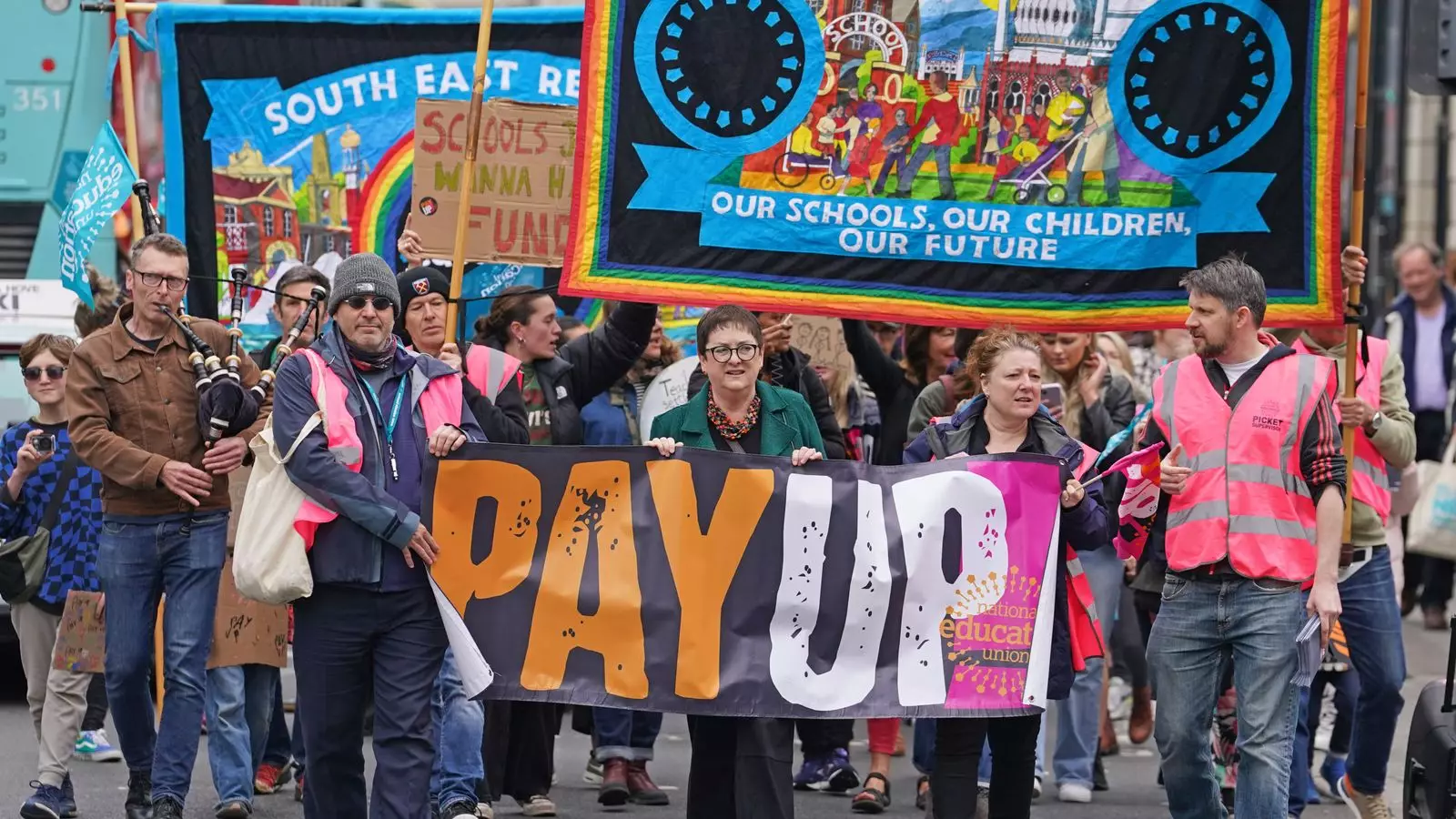When Treasury minister James Murray spoke about the reported proposals for inflation-busting wage hikes, he highlighted the importance of considering the cost of not striking a deal on public sector pay. While acknowledging the need for a response to the recommended 5.5% increase by independent pay review bodies, Murray also emphasized that the Labour government’s fiscal rules were “non-negotiable.” This stance indicates a firm commitment to financial responsibility, even in the face of significant pressure to increase public sector pay.
The proposed 5.5% increase for teachers and NHS staff, reported by The Times, has raised concerns about the potential budgetary impact. Estimates suggest that implementing such a pay rise could cost the government around £3bn, with the possibility of needing up to £10bn to cover all public sector workers if they were to receive the recommended increase. These figures present a significant challenge for Chancellor Rachel Reeves, especially considering that the government had initially budgeted for a rise between 1% and 3%.
The prospect of a higher pay increase poses a dilemma for Chancellor Reeves, who is expected to present her first budget in the autumn. While Labour had promised to control borrowing and avoid excessive tax rises during the election campaign, the pressure to address the demands for increased public sector pay may force a reassessment of budget priorities. Schools and hospitals, in particular, may struggle to accommodate a 5.5% pay rise within their existing budgets, potentially leading to cuts in other areas.
Failure to reach a resolution on public sector pay could have far-reaching consequences, including the risk of further industrial action. Treasury minister Murray highlighted the importance of addressing the pay review bodies’ recommendations in a timely and responsible manner to avoid disruptions in recruitment and retention of essential workers. Moreover, ignoring these recommendations could fuel discontent among public sector employees, leading to potential strikes and labor disputes.
The debate over public sector pay reflects broader concerns about fiscal policy and economic management. Former Chancellor Jeremy Hunt argued that showing restraint on public sector pay could help avoid the need for tax rises, emphasizing the delicate balance between spending priorities and revenue generation. However, Labour’s insistence on addressing pay disparities and improving working conditions for public sector workers underscores the complexity of navigating competing demands within limited financial resources.
Union representatives have expressed strong support for implementing the recommended pay increase, citing the need to address longstanding issues of pay inequality and retention challenges. Daniel Kebede, the general secretary of the National Education Union, warned that disregarding the pay-review bodies’ recommendations could provoke strike action among public sector workers. The history of industrial action in various sectors highlights the importance of fair and timely decisions on public sector pay to maintain labor relations and ensure workforce stability.
The debate over public sector pay reflects broader tensions between economic priorities, fiscal responsibility, and social equity. The government’s response to the proposed wage hikes will shape its credibility, financial credibility, and social cohesion in the coming months. Balancing the need for competitive salaries with budgetary constraints will require strategic decision-making and transparent communication to stakeholders. Ultimately, the cost of not striking a deal on public sector pay extends beyond financial implications to encompass the broader social and political ramifications of labor relations in the UK.

Leave a Reply